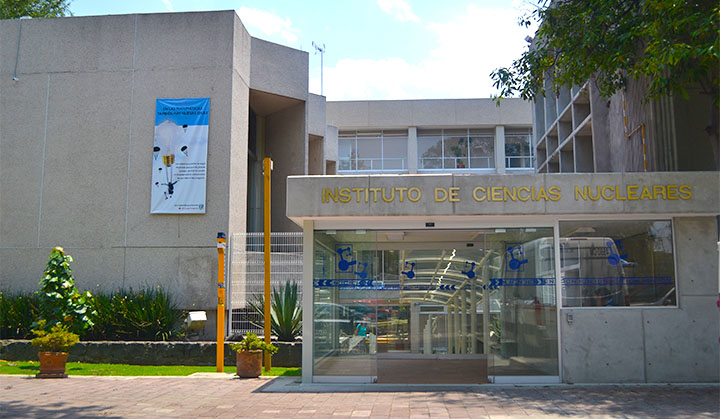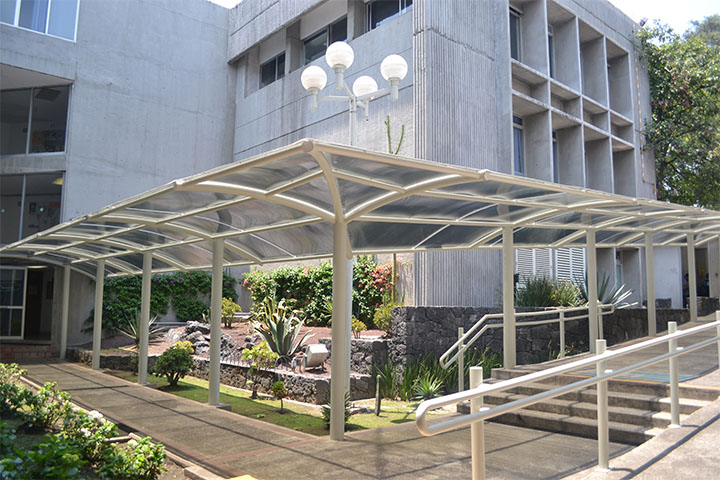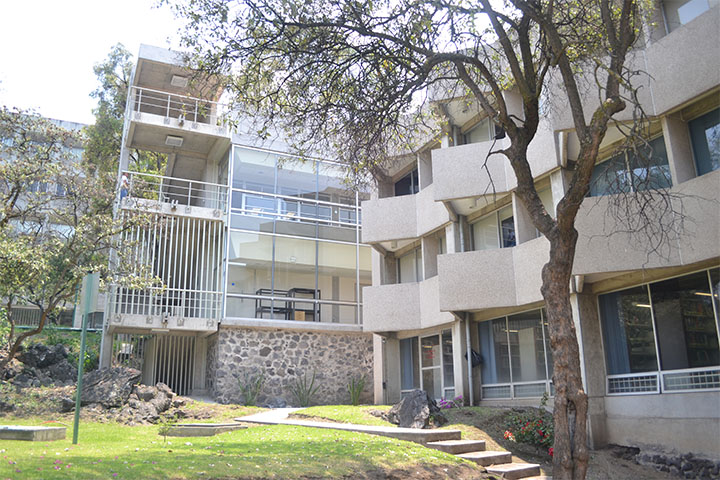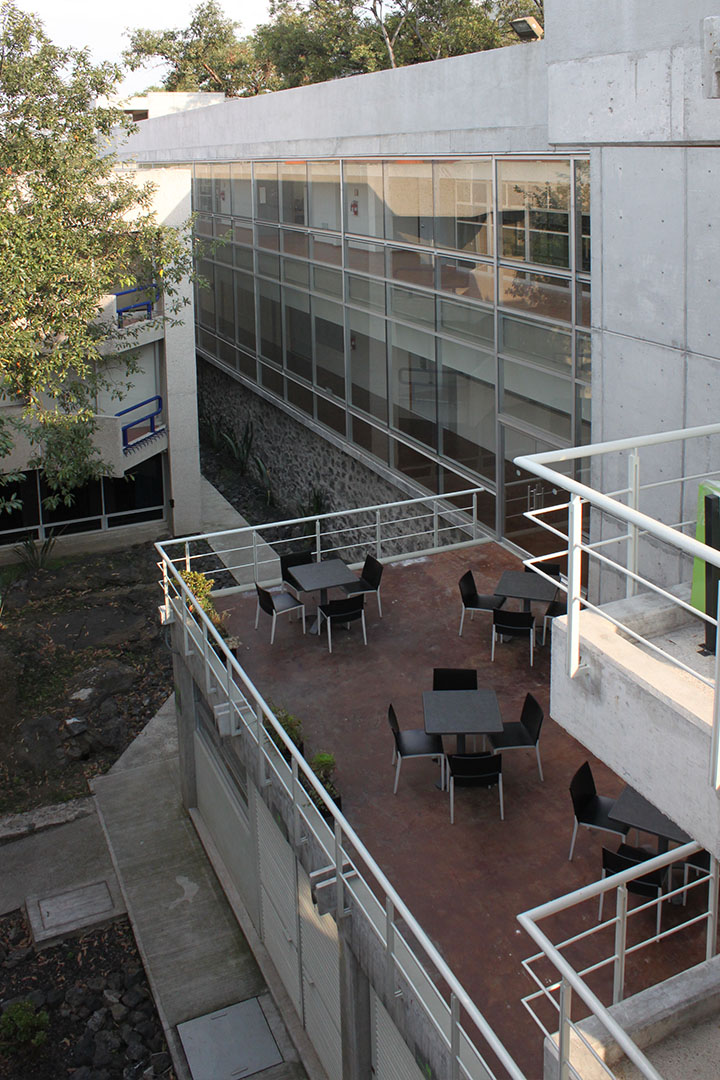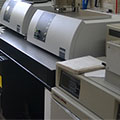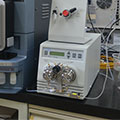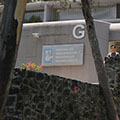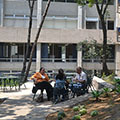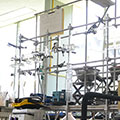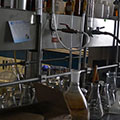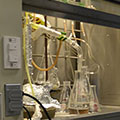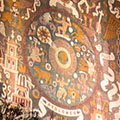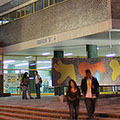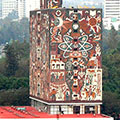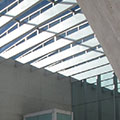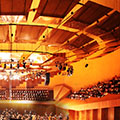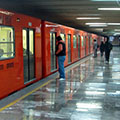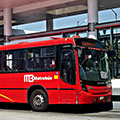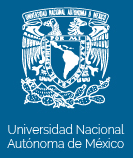Welcome to the Nuclear Sciences Institute (ICN) at the National Autonomus University of Mexico UNAM.
Our institute carries out interdisciplinary research in several areas including high energy physics,
general relativity, gravitation, cosmology, astrobiology, radio chemistry, quantum optics and matter
structure, among others. Its members have an active participation in important international experiments
such as ALICE in the LHC at CERN, the Pierre Auger Observatory, the High Altitude Water Cherenkov
Observatory (HAWC) and the JEM-EUSO Mission. Currently, ICN has 63 full time professors and 22 technicians.
Mission and Vision
Our mission is to contribute to the development of the nuclear sciences in order to achieve a better understanding
of the Universe, as well as to boost the technological and cultural growth of Mexico. Our Institute is interested in
theoretical, experimental and applied research with the aim of better understanding the fundamental components of matter
and their interactions. These studies include a wide variety of objects and processes, from the smallest, such as
elementary particles, atomic nuclei, and molecules, to the biggest, such as planets, stars and galaxies.
Our faculty lectures in Chemistry, Physics, Maths, Biology and Engineering undergraduate programs, and our institute
participates in the posgraduate programs of Astronomy, Physics, Chemistry and Earth Sciences. Currently, ICN has more
than 150 students, some of them working in their social service (work placement) or in their undergraduate or graduate
dissertations, under the mentorship of the ICN’s faculty.
Our institute was one of the first at UNAM to create a Science Communication Unit. This office has the purpose to produce
and intervene in public dialogues between our scientific community and other social groups.
Our research
ICN carries out interdisciplinary research. Its main areas of interest are physics and chemistry,
in particular gravitation and field theories, mathematical physics, high energy physics, plasma physics,
quantum mechanics, nuclear physics, atomic and molecular physics, radiation chemistry and radiation physics,
the origins of life, astrophysics and astrobiology. The activity of the institute is organized in five academic
departments. We detail the investigation that is carried out in the next paragraphs.
The Department of Matter Structure produces research in quantum systems composed by numerous particles, such as exotic nuclei,
atoms and molecules. Among other topics, research in quantum mechanics, quantum information and applied nano-optics is carried out.
High Energy Physics is a Department that conducts research about elementary particles and their interactions,
both in the development of theoretical models and in experimental projects. The faculty of this department has
a particular interest in the study of high energy cosmic rays, from the theoretical and phenomenological point
of view, and in the behavior of nuclear matter in high densities and temperatures. These research areas allow
ICN, and therefore UNAM, to have an important participation in international projects such as Pierre Auger,
ALICE, HAWC, JEM-EUSO and DAMIC.
The Department of Plasma Physics and Interaction of Radiation with Matter carries out research in plasma physics,
atomic traps, astrophysical plasmas, geophysical plasmas chemistry, planetary atmospheres and astrobiology.
This Department is part of NASA’s Mars Science Laboratory (Curiosity) researchers team, which is looking for
remains of organic matter in Mars.
The Department of Gravitation and Fields Theory produces research in subjects such as cosmological models
in general relativity, classical and quantum aspects of black holes and extended objects, mathematical physics,
statistical physics, complex systems, molecular physics in magnetic fields and the geometry of biological membranes.
Finally, the Department of Chemistry of Radiations and Radio Chemistry carries out research about the effects of ionizing
radiation in macromolecules and the formation of polymer liquid crystals, of macromolecules, of oscillating reactions,
nanofilms, nanomaterials and computational nanoscience. This Department also produces research on prebiotic conditions
in the primitive Earth in an experimental way, as well as the optical, thermoluminiscent and chemical properties of
materials which are exposed to radiation of charged particles and photons.
ICN also collaborates with different institutions in the implementation of high performance super computing systems,
used to store and send data. In 2014, a Memorandum of Understanding was signed between UNAM and CERN to start the
operation of a Tier2 Center, as part of the Grid world network that was constructed to analyze the Large Hadron
Collider data. ICN computing systems also give service to the HAWC Gamma Ray Observatory, located in the Pico de
Orizaba National Park.
Our institute has several projects to link the scientific community with society such as PAUTA (Adopt a scientific talent program)
that creates science workshops and activities for children who have a strong talent for science.
ICN also participates in the creation of new initiatives such as the Center for Complexity Sciences (C3), a new institute that carries out
interdisciplinary research in subjects such as diabetes, emerging diseases and in general, complex systems.
About the National Autonomous University of Mexico (UNAM)
The National Autonomous University of Mexico (UNAM) was created on the 22nd of September of 1910, as part of the
celebrations of the beginning of the new century. Nowadays, our University has become one of the most important in
Latin America and one of the 100 best universities in the world. Currently, UNAM has 337,763 students and 38,068
faculty members. It offers 108 undergraduate programs and 40 posgraduate programs. The Cultural Center of the main
campus offers a wide range of sports and cultural activities such as concerts, theatre plays and cinema festivals.
It also has one of the best contemporary art museums of the country and a science museum with exhibitions and
activities for the general public.
For more information about UNAM you can visit its official web page: www.unam.mx
Maps and Directions
ICN is located within the National Autonomous University of Mexico main campus. See our map here.
About Mexico City
Mexico City is one of the largest and most interesting cities in the world. It is a vibrant metropolis
that offers a wide range of cultural activities, restaurants and shops. It has numerous archaeological
sites and museums which reveal the capital’s history, from its pre-Hispanic and colonial times to its
contemporary edge. For more information about Mexico City, you can visit the following page:
www.mexicocity.gob.mx
Mexico City has an inexpensive subway system called Metro which covers all of the city. Each ticket costs $5 pesos,
and you can use it for the entire subway system. You can find the map here.
Metrobus is a system of confined buses that run through main avenues in Mexico City.
You can find the Metrobus map here. Each travel with Metrobus costs $6 pesos.
We recommend you to buy a prepaid card to use the Metro and Metrobus systems, since you can use Metrobus only with a prepaid card. The same card can be
used for both services. You can buy this card in every Metro and Metrobus station.
It also has a cheap and practical bus system that covers all the main routes. It consists of “peseros” (also called “microbuses” or “combis”): minibuses operated
by private companies. They follow fixed routes, often starting or ending at subway stations.
Contact us
For enquiries, you can send and e-mail to the following adresses:
If you are a posdoctoral researcher or a visiting researcher, please contact: sriacad@nucleares.unam.mx
If you are a prospective student, please contact: no_spam@nucliades.unam.xmcia
If you want to visit the institute, have a guided tour or interview one of our researchers, please contact: no_spam@nucliades.unam.xmion
Connect with us:
Facebook
Twitter
YouTube
Instagram
COMUNIDAD UNAM
- Defensoría de los Derechos Universitarios
- URGENCIA UNAM: 55 5616 0914 ó 55 5622 0140
- Reacción PUMA: 55 5622 6464 ext. 26464

